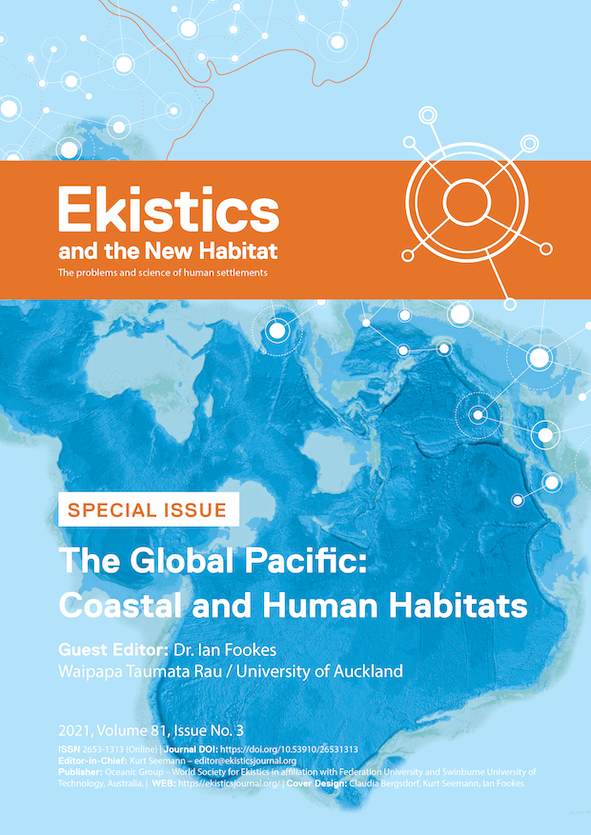Pacific Man – A Future Speculation Developed from Pacific Architectonics
DOI:
https://doi.org/10.53910/26531313-E2021813546Abstract
Characterised by flexible joints and renewable use of materials, Pacific Architecture contains an integrated tectonic system that is historically used to construct both buildings and highly efficient watercrafts, enabling civilizations to flourish in Oceania. However, its significant architectural languages are widely dismissed in today’s utilitarian society. Witnessed in museum, cultural faculties and resorts, Pacific Architecture is often perceived as a cultural artefact that lacks of practical application.
As a celebration of Pacific Architecture, the paper aims to discover how tectonics and construction systems from the Pacific could be revived, radically developed and utilised to accommodate “Future Pacific Living” in the rapidly changing world. Through a collective of speculative architectural propositions, the paper proposes alternatives to the existing postcolonial built environment while fully embracing future technologies. The first part of the paper is a review of the author’s past project ‘The Lomipeau Speculation’, a macro-scale visionary proposal to conceive of a city formed by Pacific tectonics. The second part, Pacific Men, is a narrative developed from the past project, exploring how Pacific Architecture can re-define humans’ relationship with the Ocean at a micro-scale. The speculation will be presented through architectural drawings with references to ekistic units.
Downloads
Published
How to Cite
Issue
Section
Categories
License
Copyright (c) 2022 Ekistics and The New Habitat

This work is licensed under a Creative Commons Attribution-NonCommercial-NoDerivatives 4.0 International License.
Please contact the Editor-in-Chief: editor@ekisticsjournal.org, should you have any questions on copyright for your submission.
This research journal is for Educational and Knowledge development purposes.
All material published on this site complies with our copyright and terms as described by the Attribution-NonCommercial-NoDerivaties 4.0 International (CC BY-NC-ND 4.0)






